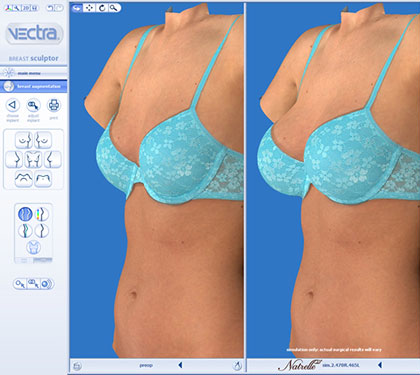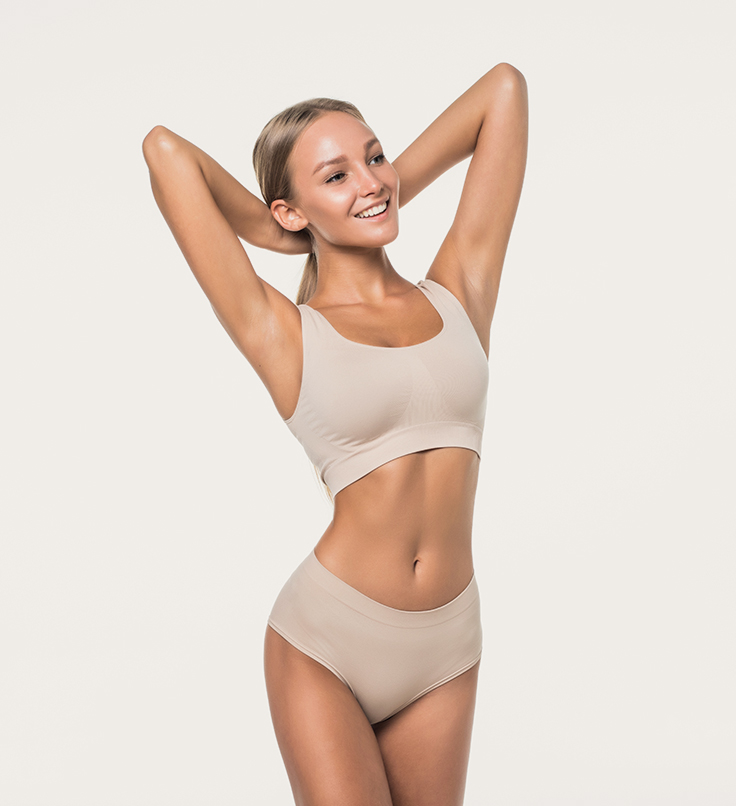Breast Augmentation in Singapore
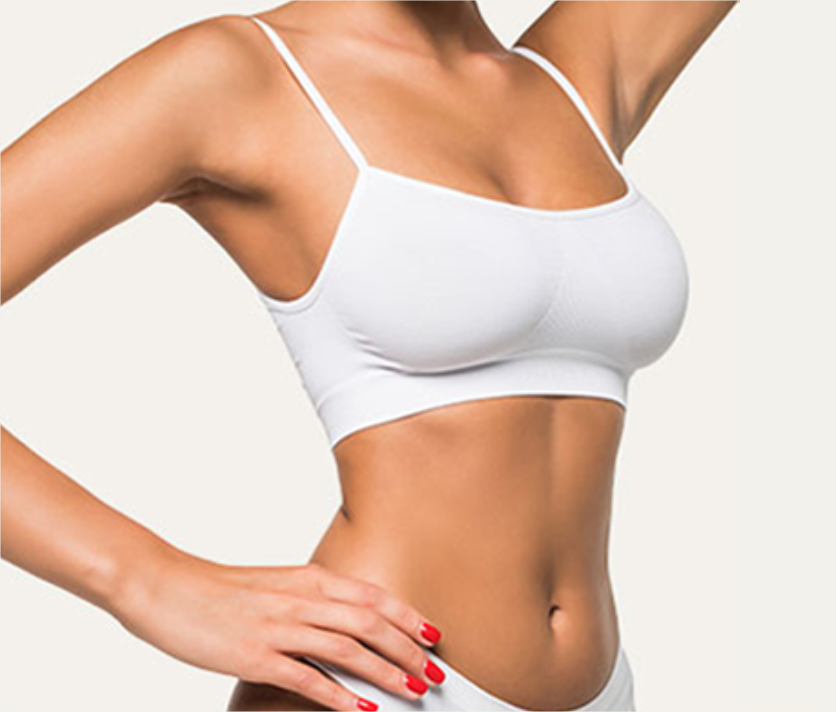
Why Choose Astrid for Breast Augmentation
- At Astrid, our doctors are one of the earliest surgeons selected to perform Motiva Breast Augmentation and are experienced in using Motiva Breast Implants for many years.
- Our technique gives MinimalScar®, less pain and shorter downtime.
- Vectra 3D-simulation helps patients to visualise their outcome and select their implants.
- Postoperative scar treatments available to minimise scarring.
What is Breast Augmentation?
Breast augmentation refers to increasing breast size or shape to create a more desirable appearance. In addition to a more contoured figure, breast augmentation offers benefits such as improved clothing fit and enhanced self-confidence.
Women choose to have breast augmentation surgery to enhance their breasts, or to restore them, especially after experiencing deflation after breastfeeding or weight loss.
Commonly, breast augmentation is performed using implants, fat transfer or a combination of both.
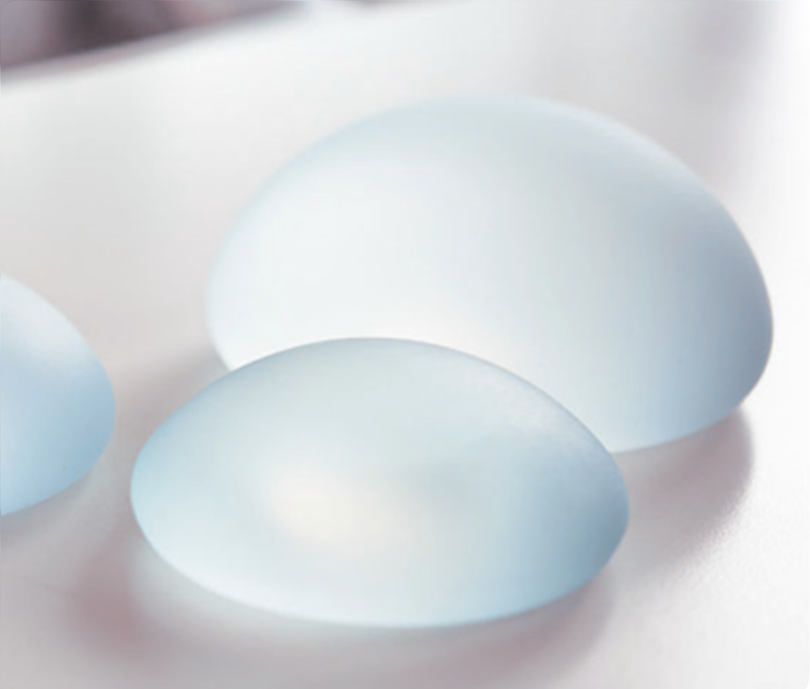
Types of Breast Augmentation
Implant-based breast augmentation involves positioning a silicone breast implant in an appropriate pocket beneath the breast, providing increased volume while minimising visible scarring. This procedure is typically conducted as outpatient surgery under general anaesthesia accompanied by sedation.
The use of the latest 6th generation silicone Motiva breast implants maximises the safety, aesthetics and natural feel for women considering breast augmentation.
With the advent of Motiva implants, patients can now expect a short scar measuring 2.5 to 3 cm. The MinimalScar® approach is made possible with our specialised surgical technique, innovative surgical tools and the advanced features of Motiva breast implants- their unmatchable flexibility and durability. This means a more natural result, less pain, minimal scar and shorter downtime. We also offer breast implant replacement surgery if necessary.
Fat Grafting to the Breast
Fat grafting to the breast is an alternative method of breast enhancement that utilises your own tissue. Fat is extracted from areas with excess using liposuction techniques, and the aspirate is then purified to retain fat cells, stem cells, and growth factors.
These components are then injected into the breast at the optimal depth to maximise aesthetic results and fat retention, which typically ranges from 50-70%. As the procedure uses your own fat, the results are entirely natural and feel like your own breast tissue.
However, there is a limit to the amount of fat graft your breast can accommodate before the fat retention rate declines. Depending on your desired breast size, multiple fat grafting sessions may be necessary.
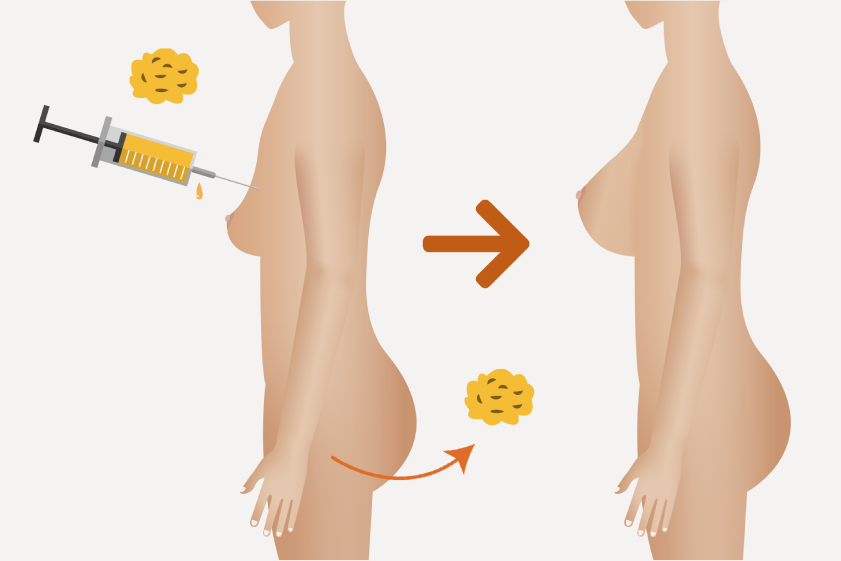
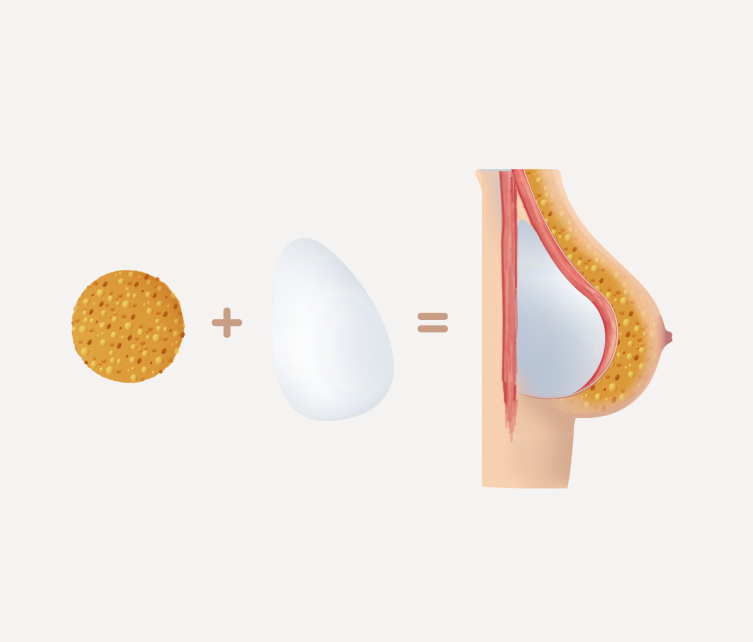
Hybrid Breast Augmentation
Hybrid breast augmentation refers to the use of both implants and fat transfer in the same operation to enhance the breast shape. There are some situations when breast implants alone cannot effectively achieve the ideal contour. Fat grafting is used as an adjunct to correct imperfections.
While the implant contributes to the increased volume, fat transfer enhances soft tissue coverage around the implant, reducing the likelihood of rippling and implant visibility.
Types of Breast Incisions
Whether you opt for implant-based breast augmentation or hybrid breast augmentation, there are a few different incisions that can be utilised: IMF (inframammary fold), periareolar (around the areola), or transaxillary (via the armpit):
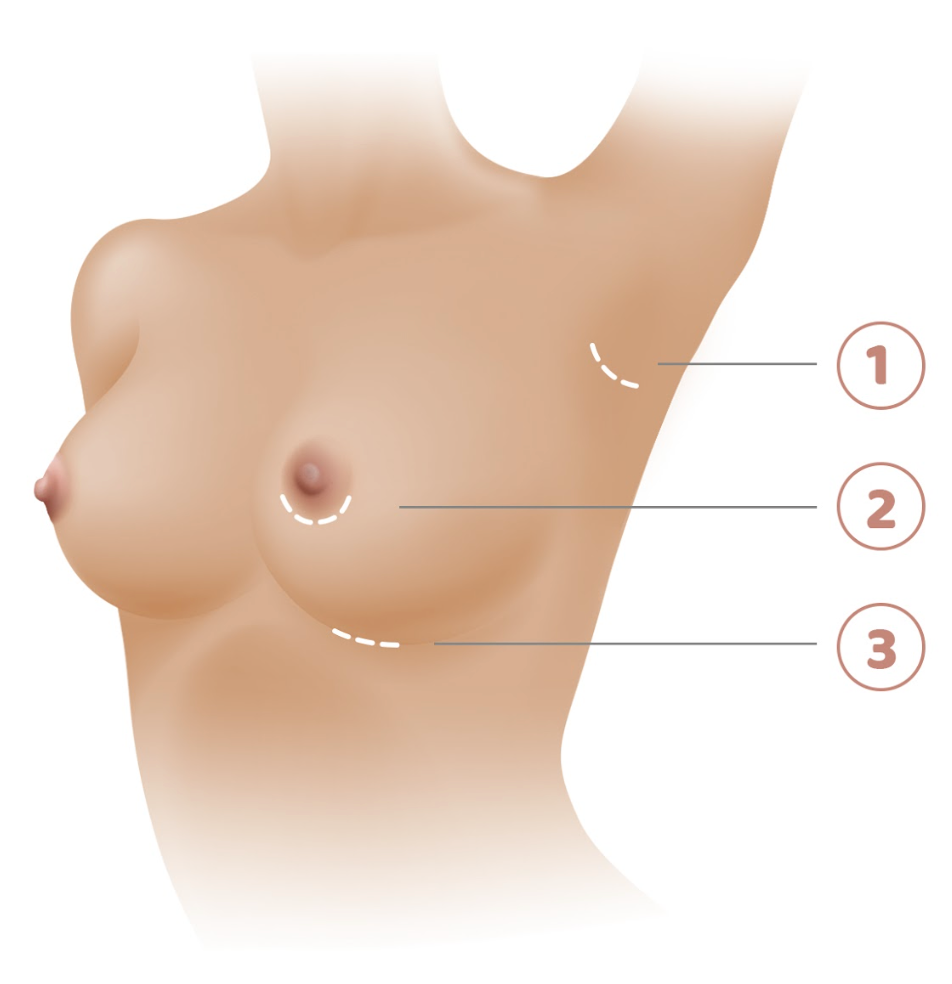
Transaxillary Approach
- Scar hidden in armpit
- Difficult to perform additional / secondary surgeries
Periareolar Approach
- Scar hidden between areola and skin
- Not suitable for patients with smaller areolas
IMF Approach
- Often blends in with natural inframammary fold
- Fastest procedure
- Minimal scarring
Visualise Results with Vectra 3D-Simulation
Your visual understanding is directly linked to your ability to make informed decisions. While traditional before-and-after photos can offer a glimpse of breast augmentation results, they cannot precisely represent outcomes on your unique body.
Our 3D simulation system considers your specific measurements, allowing you to accurately preview your appearance from various angles using different implant shapes and sizes. The advanced technology captures high-resolution images of your breasts, enabling detailed visualisation of your augmentation results.
This innovative tool facilitates side-by-side comparisons of diverse implant sizes on your distinct frame from any perspective, allowing you to confidently select the type of implant or surgery approach that best aligns with your objectives, without solely relying on your surgeon's choice for you.
What To Expect After a Breast Augmentation Procedure?
Following the procedure, you'll be briefly monitored before being discharged. Incision sites will have dressings, and a support garment will be provided. Drains are rarely necessary, and stitch removal is typically not needed.
Expect some pain, swelling, and bruising during the first week, which can be managed with medications. A clinic follow-up will occur within the first few weeks, during which you should carefully tend to your incisions and refrain from strenuous activities.
Gradually, you can start light exercise, resuming full activity 4 to 6 weeks post-procedure. At this point, you can probably wear a regular bra, but it's advisable to avoid any strong impact on the chest to prevent implant rupture.
Breast Augmentation Often Done With
- Nipple reduction surgery
- Removal of axillary breast
- Breast fat grafting (lipofilling)
- Mastopexy (breast lift)
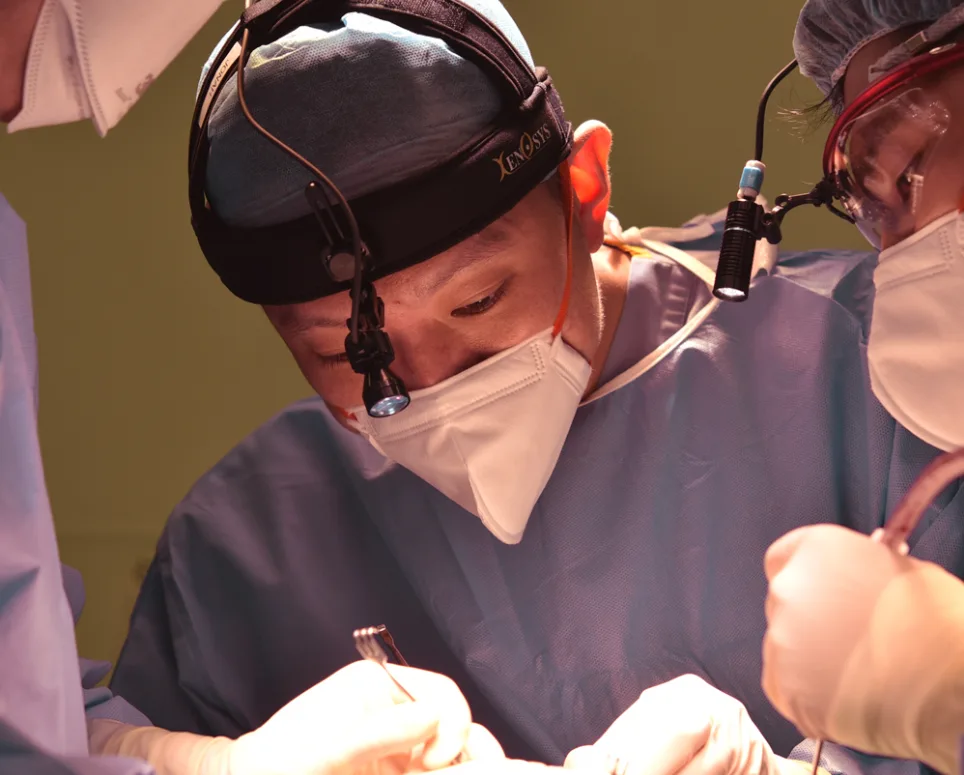
Personalised Breast Treatment with Genuine Care

Detailed
Assessment
Our experienced breast augmentation doctor takes the time to understand your individual needs, aesthetic goals, and medical history, ensuring the most appropriate and effective approach for your specific breast treatment and procedure.

Honest
Recommendations
Astrid's commitment to personalised care allows us to deliver stunning results that boost confidence and improve overall well-being, ensuring that you feel genuinely cared for throughout the entire breast augmentation process.

Customised
Planning
We collaborate with you to develop a customised plan that addresses your functional concerns and enhances your natural beauty, all while prioritising your safety and comfort.

Tailored
Treatments
At Astrid, we understand that each patient is unique, and we strongly believe in creating personalised, tailored surgical plans for our patients.
Breast Augmentation FAQs
Will the implants be placed above or below the chest muscle? What is the difference?
Are there risks or complications associated with breast augmentation?
What should I avoid before breast augmentation surgery?
- Avoid supplements such as fish oils, vitamin E, Ginseng, glucosamine a week before surgery
- Stop smoking to maximise your healing ability (make use of this opportunity to quit!)
- Avoid chest exercises for a week before surgery.
Can I do exercises after breast augmentation surgery? Can I carry my baby?
- It is advisable to avoid strenuous exercises and carrying heavy loads for a week after surgery.
- At the 1 week appointment, our plastic surgeon will advise you on what exercises you may or may not do. In most cases, patient can resume all exercises after 3 to 4 weeks.
How much time do I have to take off work?
- The duration depends on the technique used (prepectoral or subpectoral) and the type of work you do.
- For office-based work, this is around 2 to 5 days.
How long before I can go back to work after breast augmentation surgery?
How long does the implant last? Do I need to change my breast implants?
- Motiva provides lifetime warranty for implant leak and 10-year warranty for capsular contracture.
- It is not strictly required to change your implants at 10 years and this duration serves as a guide and you are advised to continue to see your surgeon after surgery to monitor the condition of the implant and surgery. Our doctors will discuss this in more detail during your consultation.
Can breast augmentation be performed at any age?
Where is the implant placed?
How can we help?
- Copyright 2025. Astrid Plastic Surgery
- Privacy Policy | Terms of Use

